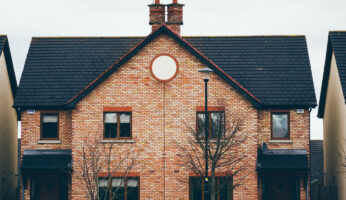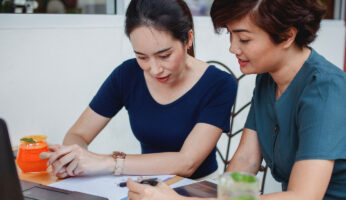Table of Contents
What is a loft apartment?
A loft apartment is a room in an old factory or warehouse that has been transformed into a modern residential unit. Most lofts are spacious apartments with open-plan designs and a certain rustic charm.
Loft can mean more than one thing
The term “loft” can be confusing because it has multiple definitions. If you hear someone say that they just moved into a loft, they might mean the kind of apartment we described above, or they might mean a small attic-like space with sloped-roof ceilings.
In the rest of this article, when we talk about “lofts” and “loft apartments,” we’re using the first definition — a formerly industrial space that has been repurposed into a large apartment.
Characteristics of a loft apartment
Loft-style apartments tend to have certain trademark features, including:
- Industrial features: When people think of “loft style,” they usually imagine the raw look of brick walls, hard floors, and exposed pipes and support beams.
- One large space: Lofts usually consist of one large room, with no partitioning walls. This large, open space is emphasized by high ceilings and large windows.
The huge amount of space you get with a loft is ideal if you have roommates or if you need room to work on large projects as part of a hobby or home-based business. This is why lofts originally gained popularity among artists and musicians and why they’ve become a trend among people attracted to their vintage style.
In fact, the demand for loft apartments has become great enough that it’s started to pose a problem. After all, there are only so many abandoned warehouses and factories ready to be converted into living spaces.
This is why many new apartments are being designed in the loft style. These units are known as soft lofts, in contrast to hard lofts.
What is a hard loft?
A hard loft, also known as an industrial loft or a classic loft, is a traditional loft apartment that was converted from an industrial building like we’ve described. Hard lofts are what most people first think of when they imagine a loft apartment.
Benefits of hard lofts
- Unique character: No two hard lofts are alike. Their uniqueness and authenticity are big parts of what makes them so appealing to so many people.
- Historical value: If you want a feel for how a city has changed over time, or if you simply have an appreciation for old architecture, then you’ll like living in a hard loft.
What is a soft loft?
A soft loft is a new residential building that was designed to imitate the style of a hard loft. Purists will tell you that soft lofts aren’t real lofts because they were never used for anything other than residential purposes, whereas their proponents (e.g. their landlords) will claim that they have everything that hard lofts have to offer and more.
Soft lofts lack the authenticity of hard lofts, but they also have certain advantages that hard lofts don’t.
Benefits of soft lofts
- More amenities: Because soft lofts are built for tenants to inhabit, they’re more likely to come with the amenities you’d find in a traditional apartment, such as a parking garage, gym, or pool.
- Built with newer materials: Soft lofts are constructed with newer materials. This lets them avoid some of the problems you often get with hard lofts, which can include poor insulation, low power efficiency, and vulnerability to harsh weather.
Lofts vs. apartments: what’s the difference?
Lofts consist of a single, multifunctional space with no internal walls. Apartments, on the other hand, are usually divided into multiple rooms, such as a bedroom, a kitchen, and a dining area.
Lofts often feature high ceilings and large windows. You can also usually see support beams, plumbing, and wiring that would typically be hidden by drywall in a standard apartment.
Because apartments are designed for people to live in, they usually offer more amenities than lofts do (with the exception of some soft lofts). While a standard apartment might have a common area for residents, a fitness room, a laundry room, a garage, and so on, you probably won’t find any of those in a traditional loft.
Lofts vs. studios: what’s the difference?
A studio is a small, one-room apartment. Studio apartments and lofts have one thing in common: both are organized as a single space without interior walls.
However, that’s pretty much their only similarity. Lofts have substantial differences from studios when it comes to:
- Size: Lofts are much larger than studios. Most studio apartments have a ceiling height of around 8 feet, whereas loft ceilings can be anywhere from 10 to 20 feet high because they were designed to accommodate large products and equipment.
- Location: Although studios are very popular in big cities where space is at a premium, you can find them for rent nearly everywhere. Traditional lofts, on the other hand, can pretty much only be found in former industrial districts.
- Price: You can expect to pay more for a loft than a studio. There are several reasons for this. First, because lofts are bigger, you have to pay for the extra space. Second, utilities are usually much more expensive in lofts than standard apartments. (We’ll talk about why this is later on.)
Pros and cons of living in a loft
Now that you understand what a loft is, let’s take a look at some of the pros and cons of renting one.
Pros of renting a loft
The benefits of loft-style apartments include:
A large and flexible space
When you live in a loft, you have a large space that you can personalize in whatever way you like. Most lofts have a trendy, rustic vibe that you can build on or accentuate, and the open floor plan offers lots of decorating opportunities.
The first lofts were supposedly a refuge for artists and musicians who needed inexpensive places where they could work without the spatial limitations of traditional apartments. Even if you’re not an artist, you might find the extra room attractive if you run a small business from your home because you can easily convert part of your loft into a workspace.
High ceilings with abundant natural light
As mentioned, lofts come with large windows and high ceilings, which is great for people who find normal apartments too dark or claustrophobic. Because most lofts are built in refurbished industrial areas, their windows often overlook historic buildings with interesting architecture,
Cons of renting a loft
Despite their aesthetic and functional appeal, lofts have four big drawbacks that you should consider before you decide to move into one:
Minimal privacy
Your loft will have a bathroom, but it probably won’t come with separate bedrooms. The lack of internal walls means little to no privacy. This might be a problem if you’re looking to move in with roommates or if you want to use part of the loft as a private workspace.
Lack of traditional storage
Most lofts don’t come furnished with closets, cabinets, shelves, or other storage space. It’s easy to take those things for granted in daily life because virtually all other apartments include them.
If you’re planning on moving into a loft, figure out where your possessions will go. Think about where you keep your clothes, books, cleaning supplies (vacuum, broom, mop), and kitchenware, and ask yourself where you’d put those things in a large, empty room. You might want to consider building or buying additional storage space.
Fewer amenities
As mentioned, traditional lofts don’t usually have shared amenities like a gym, pool, or roof deck. If those features are important to you, then you should consider getting a soft loft, which will probably have more amenities because it was actually built for residential purposes.
More expensive utilities
If you live in a loft, then your utility bills will be higher than if you lived in a standard apartment. This is because many traditional lofts were constructed with inefficient energy systems and poor insulation.
This isn’t just a problem for traditional lofts. Soft lofts also have expensive utility bills for the simple reason that it costs more to heat and cool a large space. If you’re in the market for a loft, ask the landlord how much utility bills usually are so that you can factor the cost into your budget.






